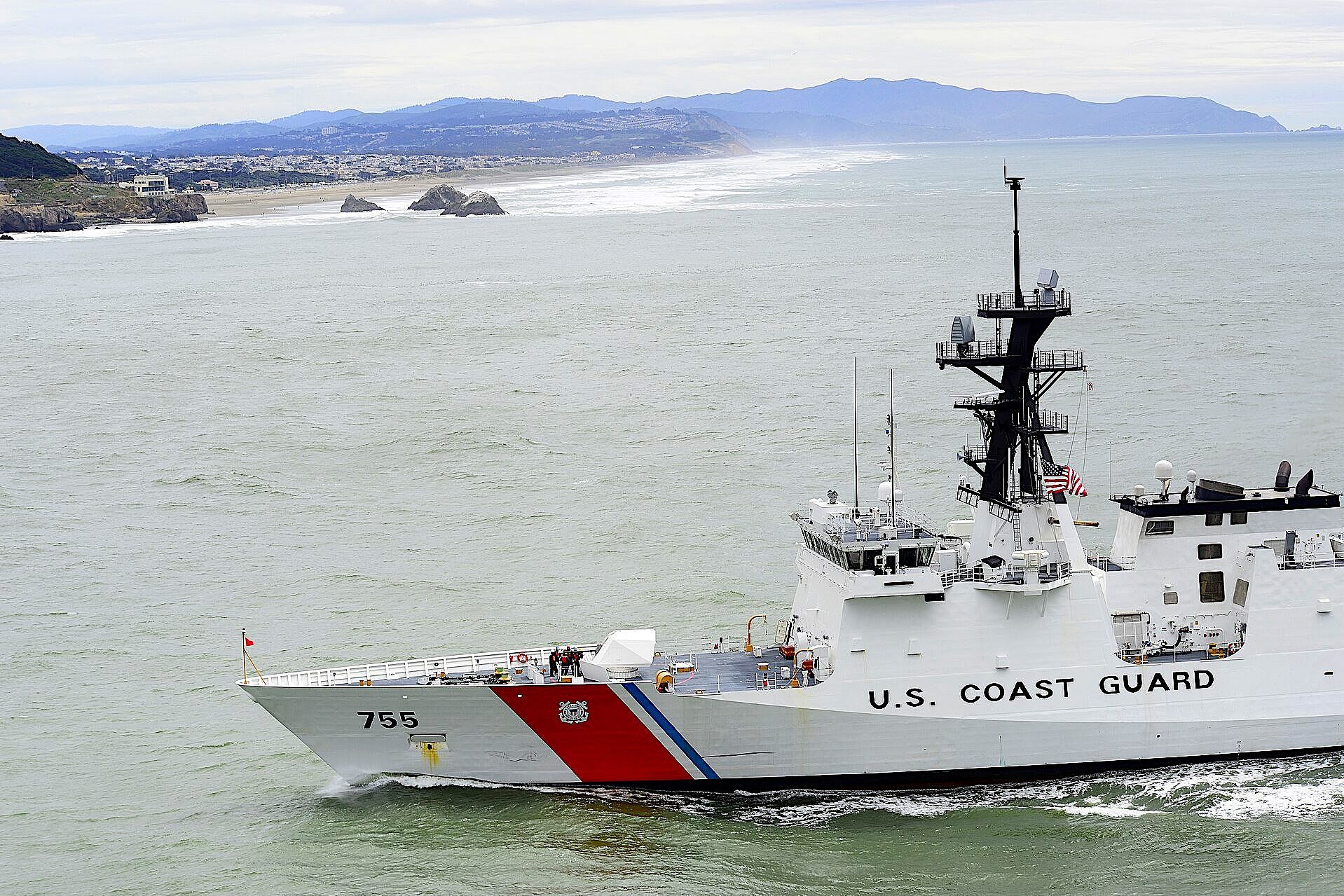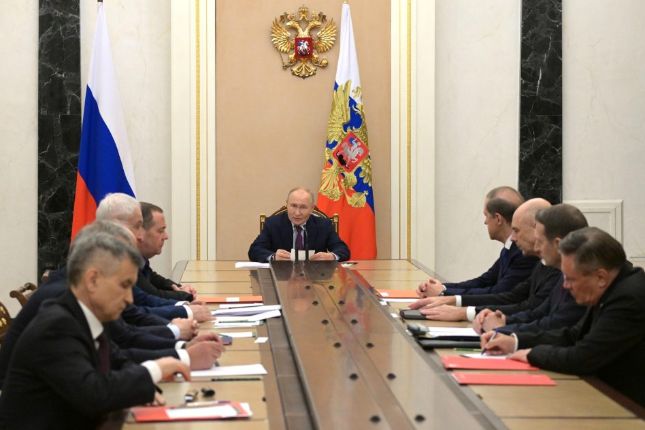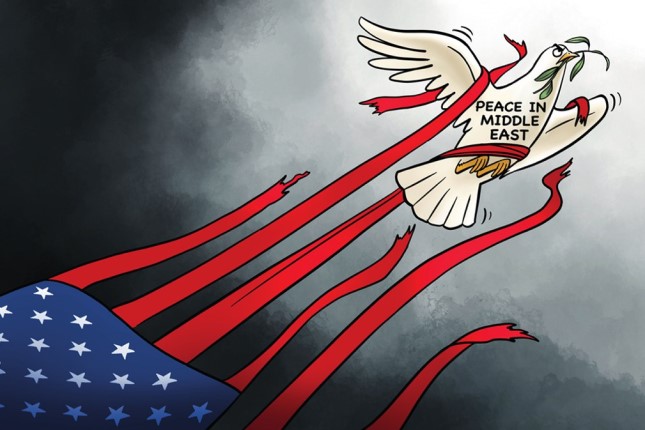Over the past decade, the prospect of Chinese military aggression in the Indo-Pacific has moved from the realm of the hypothetical to the war rooms of U.S. defense planners. Chinese leader Xi Jinping has significantly accelerated his country’s military buildup, now in its third decade. At the same time, China has become increasingly assertive across a wide swath of the Pacific, advancing its expansionist maritime claims and encroaching on the waters of key U.S. allies and important security partners, including Japan, the Philippines, and Taiwan. Xi has asserted, with growing frequency, that Taiwan must be reunited with China, and he has refused to renounce the use of force to achieve that end. With the United States distracted by major wars in Europe and the Middle East, some in Washington fear that Beijing may see an opportunity to realize some of these revisionist ambitions by launching a military operation before the West can react.
With Taiwan as the assumed flash point, U.S. strategists have offered several theories about how such an attack might play out. First is a “fait accompli” conquest of Taiwan by China, in which the People’s Liberation Army employs missiles and airstrikes against Taiwanese and nearby U.S. forces while jamming signals and communications and using cyberattacks to fracture their ability to coordinate the island’s defenses. If successful, these and other supporting actions could enable Chinese forces to quickly seize control. A second path envisions a U.S.-led coalition beating back China’s initial assault on the island. This rosy scenario finds the coalition employing mines, antiship cruise missiles, submarines, and underwater drones to deny the PLA control of the surrounding waters, which China would need in order to mount a successful invasion. Meanwhile, coalition air and missile defense forces would prevent China from providing the air cover needed to support the PLA’s assault, and electronic warfare and cyber-forces would frustrate the PLA’s efforts to control communications in and around the battlefield. In a best-case outcome, these strong defenses would cause China to cease its attack and seek peace.
Given that both China and the United States possess nuclear arsenals, however, many strategists are concerned about a third, more catastrophic outcome. They see a direct war between the two great powers leading to uncontrolled escalation. In this version of events, following an initial attack or outbreak of armed conflict, one or both belligerents would seek to gain a decisive advantage or prevent a severe setback by using major or overwhelming force. Even if this move were conventional, it could provoke the adversary to employ nuclear weapons, thereby triggering Armageddon. Each of these scenarios is plausible and should be taken seriously by U.S. policymakers.
Yet there is also a very different possibility, one that is not merely plausible but perhaps likely: a protracted conventional war between China and a U.S.-led coalition. Although such a conflict would be less devastating than nuclear war, it could exact enormous costs on both sides. It also could play out over a very wide geographic expanse and involve kinds of warfare with which the belligerents have little experience. For the United States and its democratic allies and partners, a long war with China would likely pose the decisive military test of our time.
Battles without bombs
A military confrontation between China and the United States would be the first great-power war since World War II and the first ever between two great nuclear powers. Given the concentration of economic might and cutting-edge technological prowess in Japan, South Korea, and Taiwan—all three advanced democracies that are either close allies or partners of the United States—such a war would be fought for very high stakes. Once the fighting had started, it would likely be very difficult for either side to back down. Yet it is far from clear that the conflict would lead to nuclear escalation.
As was the case with the Soviet Union and the United States in the late twentieth century, both China and the United States possess the ability to destroy the other as a functioning society in a matter of hours. But they can do so only by running a high risk of incurring their own destruction by provoking a nuclear counterattack, or second strike. This condition is known as “mutually assured destruction,” or MAD. During the Cold War, the fear of setting off a general nuclear exchange provided Moscow and Washington with a strong incentive to avoid any direct military confrontation.
Of course, Beijing’s nuclear balance of power with Washington is significantly different from that of Moscow during the Cold War, when the United States and the Soviet Union achieved a rough parity in forces. China’s nuclear arsenal is a fraction of the size of the United States’, although Beijing is pursuing a dramatic expansion with the goal of matching the U.S. strategic arsenal within the next decade. Nevertheless, even now the Chinese arsenal is large enough that if China were attacked, it would have sufficient nuclear forces left to execute a retaliatory strike on the United States—thus bringing about MAD. A U.S.-Chinese war would be the first between great nuclear powers.
Yet there is strong ground for thinking that a U.S.-Chinese war would not go nuclear. In more than seven decades of conflicts since World War II, including many involving at least one nuclear power, nuclear weapons have been notable chiefly for their absence. During the Cold War, for example, the two nuclear superpowers engaged in proxy wars in Africa, Asia, and Latin America that remained conventional—despite incurring high human and military costs on both sides. Even in wars in which only one side possessed nuclear weapons, that side refrained from exploiting its advantage. The United States fought bloody and protracted wars in Korea and Vietnam and yet abstained from playing its nuclear trump card. Similarly, Israel refrained from employing nuclear weapons against Egypt or Syria, even in the darkest hours of the 1973 Yom Kippur War. The same has been true thus far of Russia in its war with Ukraine, even though that conflict is now approaching the end of a second year of fierce fighting and has already exacted from Russia an enormous price in blood and treasure.
This nuclear restraint should not be surprising. During the Cold War, the possibility of a nonnuclear conflict played a significant part in strategic planning on both sides. Thus, U.S. and Soviet thinking addressed not only the threat of nuclear escalation but also the prospect of a prolonged conventional war. To prepare for that kind of war—and thus dissuade the other side from believing it could win such a conflict—each superpower stockpiled large quantities of surplus military equipment as well as key raw materials. The United States maintained an aircraft “boneyard” and maritime “mothball fleet”—large reserves of retired planes and ships that could be mobilized and brought into service as needed. For their part, the Soviets amassed enormous quantities of spare munitions, along with thousands of tanks, planes, air defense systems, and other weapons to support extended combat operations. A working assumption of these preparations on both sides was that a war could unfold over an extended period without necessarily triggering Armageddon.
In the event of armed conflict between China and a U.S.-led coalition, a similar dynamic could play out again: both sides would have a strong interest in avoiding uncontrolled escalation and could seek ways to fight by other means. Simply put, the logic of mutually assured destruction would not end at the onset of hostilities but could deter the use of nuclear weapons during the war. Given this reality, it is crucial to understand what a twenty-first-century great-power conflict might look like and how it might evolve.
Reasons to fight
There are many ways that a war between China and the United States could start. Given China’s ambition to dominate the Indo-Pacific, such a war would very likely involve the so-called first island chain, the long arc of Pacific archipelagoes extending from the Kuril Islands north of Japan, down the Ryukyu Islands, through Taiwan, the Philippines, and parts of Indonesia. As many in Washington have argued, Taiwan is the most obvious target, given the island’s strategic location between Japan and the Philippines, its key role in the global economy, and its status as the principal object of Beijing’s expansionist aims. China’s military has been increasingly active in the Taiwan Strait, and the PLA has massed its greatest concentration of forces across from the island. In the event of a Chinese attack on Taiwan, the United States would be compelled to defend the island or risk having key neutral countries and even allies drift toward an accommodation with Beijing.
Yet the Taiwan Strait is not the only place a war could begin. China has continued its incursions into Japan’s airspace and its provocative actions in the exclusive economic zones of the Philippines and Vietnam, raising the possibility of a war-provoking incident. Moreover, tensions between North Korea and South Korea remain high. If fighting broke out on the Korean Peninsula, the United States might dispatch reinforcements there, causing Beijing to see an opportunity to settle scores at other points along the first island chain.
Or a war with China could start in South Asia. Over the past decade, China has clashed with India along their shared border on several occasions. Despite lacking a formal alliance with the United States, India is a member of the Quad (Quadrilateral Security Dialogue), the security grouping that also includes Australia, Japan, and the United States and that has stepped up joint military cooperation over the past few years. If India were to become the victim of more significant Chinese aggression, Washington would have a strong interest in defending a major military power and partner that is also the world’s largest democracy.
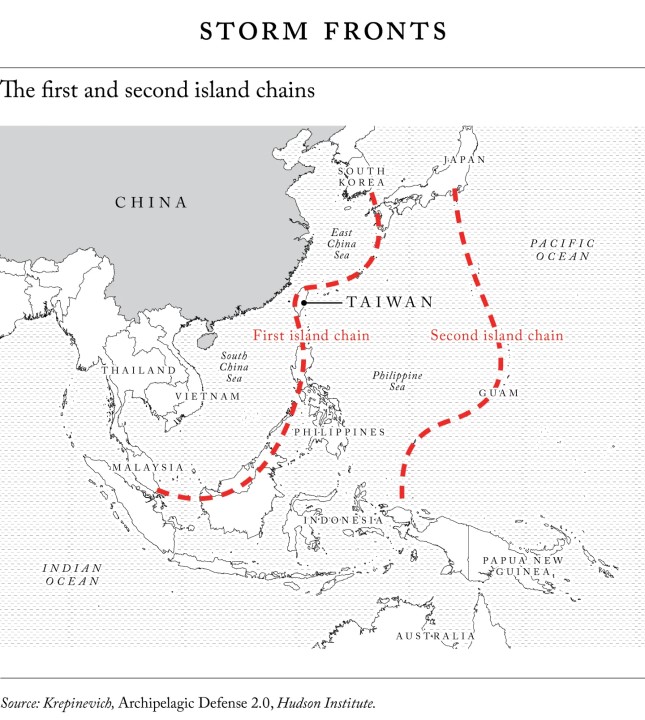
In short, if war breaks out in any of these places, it could draw China and the United States into direct armed conflict. And if that happens, it would be unlikely to end quickly. Take the case of Taiwan. Although it is possible that China could either achieve a rapid conquest before the United States could respond or be stopped cold by a U.S.-led coalition, these outcomes are hardly assured. As Russia discovered in Ukraine in 2022, rapid subjugation, even of an ostensibly weaker power, can be harder than it looks.
But even if Washington and its partners are able to prevent the PLA from seizing Taiwan through a fait accompli, Beijing still might be unwilling to accept defeat. And like the United States, it would possess the means to continue fighting. Given the high stakes, neither side can be counted on to throw in the towel, even if it suffers severe initial reverses. And at that point, the course of events would be determined not only by the intentions of the two great powers themselves but also by the responses of other countries in the region.
In contrast to the Cold War, in which the two superpowers were each supported by rigid alliances—the U.S.-led NATO and the Soviet Union’s Warsaw Pact—the current situation in the Indo-Pacific is a geopolitical jumble. China has no formal alliances, although it enjoys close relationships with North Korea, Pakistan, and Russia. For its part, the United States has a set of bilateral alliances and partnerships in the region based on hub-and-spoke relationships, with Washington as the hub and Australia, Japan, the Philippines, South Korea, Taiwan, and Thailand forming the spokes. Yet unlike the members of NATO, which are obligated to view an attack on one as an attack on all, these Asian allies have no shared defense commitment.
In the event of Chinese aggression in the Indo-Pacific, then, the responses of U.S. partners in the region are less than certain. It is reasonable to assume that Australia and Japan would join the United States in coming to the victim’s defense, given their close alliance with the United States, their ability to project significant military power abroad, and strong interest in preserving a free and open Indo-Pacific community of nations. But other powerful countries could influence the war’s character—arguably, the two most important being India (on the side of the United States) and Russia (on the side of China). Just as the local Asian and European wars in the late 1930s expanded to become a global war, so might a war with China overlap with the war in Ukraine or a conflict in South Asia or fighting in the Middle East.
What happens in the early stages of the war could also determine the constellation of powers on each side. The party that is judged to be the aggressor could alienate fence sitters that view the war from a moral perspective. States with more of a realpolitik view, on the other hand, might ally themselves with whichever side achieves early success (as Italy did in World War II), or they may decide against joining their natural partners should those partners suffer significant setbacks. Following Ukraine’s successful initial defense against Russia’s invasion in the spring of 2022, many countries in the West, including historically neutral countries such as Finland and Sweden, rallied to Kyiv’s support. Similarly, if China were unable to quickly secure its objectives, traditionally neutral countries such as Indonesia, Singapore, and Vietnam might join efforts to resist Beijing’s aggression.
Restraining orders
Once a war has broken out, both China and the United States would have to confront the dangers posed by their nuclear arsenals. As in peacetime, the two sides would retain a strong interest in avoiding catastrophic escalation. Even so, in the heat of war, such a possibility cannot be eliminated. Both would confront the challenge of finding the sweet spot in which they could employ force to gain an advantage without causing total war. Consequently, leaders of both great powers would need to exercise a high degree of self-control.
To keep the war limited, both Washington and Beijing would need to recognize each other’s redlines—specific actions viewed as escalatory and that could trigger counterescalations. Efforts toward this end can be enhanced if both sides can clearly and credibly communicate what their redlines are and the consequences that would be incurred for crossing them. Even here, problems will arise, as the dynamics of war may alter these thresholds. For example, if the PLA proves effective at using conventionally armed ballistic missiles to attack U.S. air bases in the region, Washington could decide to strike Chinese missile sites, even at the risk of hitting nuclear-armed PLA missiles kept at the same location. Moreover, individual coalition members will likely have their own, unique redlines. Consider a situation in which PLA air and sea attacks on major Japanese ports threaten to collapse Japan’s economy or cut off its food supplies. Under these circumstances, Tokyo may be far more willing to escalate the war than its coalition partners. If Japan has the means to escalate, it could do so unilaterally. If it lacks them and Washington refuses to escalate on its behalf, Tokyo might decide to seek a separate peace with Beijing. To avoid this predicament, the coalition could pre-position air and missile defenses, as well as countermine forces, at Japanese ports, and Japan could stockpile crucial imported goods, such as food and fuel.
Nevertheless, previous wars suggest that belligerents have often been able to limit their warfighting methods to prevent unnecessary escalation. Following China’s intervention in the Korean War, for example, U.S. forces had the capability to conduct airstrikes across the border in Manchuria, which served as a staging ground for Chinese forces threatening to overwhelm U.S. troops on the peninsula. But U.S. President Harry Truman turned down requests to attack these targets in order to avoid triggering a wider war with the Soviet Union. Similarly, in Vietnam, U.S. leaders declared North Vietnam’s main port of Haiphong off-limits to U.S. forces, despite its strategic importance. As was the case with Korea, it was feared such attacks could spark a wider conflict with China or the Soviet Union. In both cases, this restraint was maintained even amid wars that cost tens of thousands of American lives.
Given the potential for uncontainable nuclear escalation, it is not unreasonable to assume that both China and the United States would err on the side of caution when considering how and where to intensify military operations. But the imperative on both sides to avoid nuclear escalation would not only create parameters for the objectives sought and the means employed to achieve them. It would also set the stage for a conflict that could likely be prolonged since both sides would have very significant resources to draw on to keep fighting. In this way, the war’s containment in one respect would also facilitate its broadening in others.
A war of wills
What strategy might a U.S.-led coalition pursue in a limited but extended war with China? Broadly speaking, there are three general strategies of war: annihilation, attrition, and exhaustion. They can be pursued individually or in combination. An annihilation strategy emphasizes using a single event or a rapid series of actions to collapse an enemy’s ability or will to fight, such as occurred with Germany’s six-week blitzkrieg campaign against France in 1940. By contrast, an attrition strategy seeks to reduce an enemy’s war-making potential by wearing down its military forces over an extended period to the point that they can no longer mount an effective resistance. This was the primary strategy the Allies employed against the Axis powers in World War II. An exhaustion strategy, finally, seeks to deplete the enemy’s forces indirectly, such as by denying it access to vital resources through blockades, degrading key transportation infrastructure, or destroying key industrial facilities. A classic example of this was the U.S. Civil War.
Early in that conflict, both the Union North and the Confederate South hoped that a strategy of annihilation would succeed, such as by winning a decisive battle or seizing the enemy’s capital. These hopes proved ill founded, and over time the Confederacy adopted an exhaustion strategy, hoping to extend the war to the point that its adversary’s will to persevere would run out, despite the Union’s far greater military power. In turn, relying on its advantages in manpower, industrial might, and military capabilities, the North combined an attrition strategy with an exhaustion one. It sought to reduce the Confederacy’s armies directly through attrition by persistent military battles and indirectly by blockading Confederate ports and destroying the South’s arsenals and transportation infrastructure. In this way, the Union deprived the Confederacy of the resources and recruits needed to offset its combat losses while convincing Southerners that they could not achieve their goal of secession.
In a war between China and the United States, the strategy of annihilation carries unsustainable risks. Because both sides have nuclear weapons, an annihilation strategy based on an overwhelming military attack to destroy the enemy’s ability to resist could easily become a mutual suicide pact. That risk would also hobble efforts by either side to pursue an attrition strategy, which could similarly lead to nuclear escalation. Both belligerents would thus have an incentive to pursue strategies of exhaustion, supported when possible by attrition, to erode the enemy’s means and, perhaps more important, its will to continue fighting. Such an approach would seek to inflict maximum pressure and damage on the enemy without risking escalation to total war. The United States must convince China that it can prevail in a long war.
In shaping these strategies, China and the United States would need to consider carefully where they choose to fight. For example, to avoid crossing redlines, the two sides might accord each other’s homelands (including their respective airspaces) limited sanctuary status. Instead, they might seek horizontal, or geographic, escalation. Thus, the conflict could spread to areas beyond the first island chain or South Asia to locations where both China and the United States could project military power, such as in the Horn of Africa and the South Pacific. The war would also likely migrate to those domains that are less likely to pose immediate escalation risks. Warfighting in domains associated with the global commons, for example, might be considered fair game by both sides. These could include maritime operations (including on the sea’s surface, under the sea, and on the seabed), as well as war in space and cyberspace. Both sides might also wage war more aggressively on and above the territories of minor powers allied with China or the United States, such as the Philippines and Taiwan.
In the war’s early phases, military targets might well have priority for both sides as the PLA attempts to win a quick victory while the U.S. coalition focuses on mounting a successful defense. If so, economic targets like commercial ports, cargo ships, and undersea oil and gas infrastructure would initially be accorded lower priority. As the war becomes protracted, however, each side would increasingly seek to exhaust the other’s war-making potential through economic and information warfare. Actions toward this end might involve blockades of enemy ports and commerce-raiding operations against an enemy’s cargo ships and undersea infrastructure. One side could impose information blockades on the other by cutting undersea data cables and interrupting satellite communications, or it could use cyberattacks to destroy or corrupt data central to the effective operation of the adversary’s critical infrastructure.
Another way the belligerents could keep the war limited would be to restrict the means of attack used. Attacks whose effects are relatively easy to reverse may be less escalatory than those that inflict permanent damage. For example, employing high-powered jammers that can block and unblock satellite signals as desired could be preferable to a missile strike that destroys a satellite ground control station located on the territory of a major belligerent power. By offering the prospect of a relatively rapid restoration of lost service, such attacks might prove effective at undermining the enemy’s will to continue the war. The same might be said of seabed operations that shut down offshore oil and gas pumping stations rather than physically destroying them or naval operations that seize and intern enemy cargo ships rather than sinking them. To the extent such actions are feasible, they can preserve key enemy assets as hostages that can be used as bargaining chips in negotiating a favorable end to the war.
Bringing the conflict to a close would be an important challenge in its own right. With the prospect of a decisive military victory out of reach for either side, such a war could last several years or more, winding down only when both sides choose the path of negotiation over the risk of annihilation, an uncomfortable peace over what would have become a prohibitively costly and seemingly endless war.
Tortoises, not hares
To prevail in a war with China, then, the United States and its coalition partners will need to have a strategy not only for denying Beijing a quick victory but also for sustaining their own defenses in a long war. At present, the first goal remains a formidable task. The United States and its allies—let alone prospective partners such as India, Indonesia, Singapore, and Vietnam—appear to lack a coherent approach to deterring or defeating a Chinese attack. If China seizes key islands along the first island chain, it would be exceedingly difficult for the United States and its partners to retake them at anything approaching an acceptable cost. And if China is successful, it may propose an immediate cease-fire as a means of consolidating its gains. To some members of a U.S.-led coalition, such an offer might appear an attractive alternative to a costly fight that carries the risk of catastrophic escalation.
Still, Washington and its potential partners have the means and, at least for now, the time to improve their readiness. The United States should give priority to negotiating agreements to position more U.S. forces and war stocks along the first island chain, while allies and partners along the chain enhance their defenses. In the interim, U.S. capabilities that can be employed quickly, such as space-based systems, long-range bombers, and cyber weapons, can help fill the gap.
But U.S. strategists will also need to plan for what happens next, since preventing a Chinese fait accompli may serve only as the entry fee to a far more protracted great-power war. And unlike the initial aggression, that confrontation could broaden across a wide area and spill over into many other spheres, including the global economy, space, and cyberspace. Although there is no model for how such a war might play out, Cold War strategic thinking shows that it is possible to address the general question of a great-power conflict that extends horizontally and involves a variety of warfighting domains.
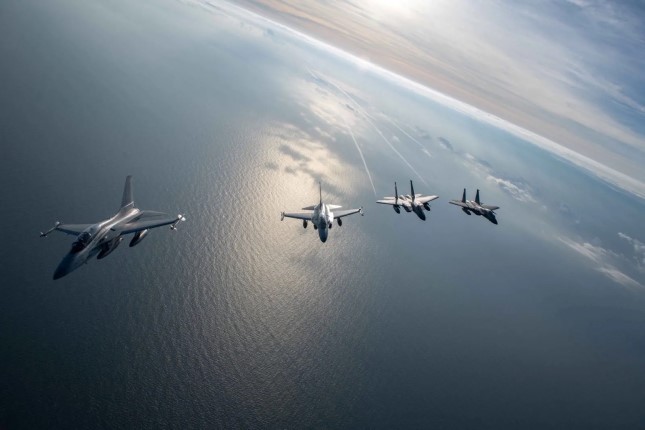
A joint U.S.-Philippine air operation in the South China Sea, near the Philippines, November 2023 Photo: Philippine Air Force / Reuters.
In the 1970s and early 1980s, the U.S. military developed an integrated set of operational concepts, or war plans, to respond to a conventional Soviet invasion of Western Europe. One, called AirLand Battle, envisioned the army and air force defeating successive “waves” of enemy forces advancing out of the Soviet Union through Eastern Europe. In this scenario, the U.S. Army would seek to block the Soviet frontline forces while a combination of U.S. air and ground-based forces—combat aircraft, missiles, and rocket artillery—would attack the second and third waves advancing toward NATO’s borders. Simultaneously, the U.S. Navy would employ attack submarines to advance beyond the Greenland–Iceland–United Kingdom maritime gaps to protect allied shipping moving across the Atlantic from Soviet submarines. And U.S. aircraft carriers would deploy to the North Atlantic with their combat air wings to defeat Soviet strike aircraft. To preclude the Soviets from using Norway as a forward staging ground, the U.S. Marine Corps also prepared to deploy quickly to that country and secure its airfields.
These concepts were based on a careful and systematic study of Soviet capabilities and strategy, including war plans, force dispositions, operational concepts, and expected rate of mobilization. Not only did these concepts guide U.S. and allied military thinking and planning; they also helped establish a clear defense program and budget priorities. The principal purpose of these efforts, however, was to convince Moscow that there was no attractive path it could pursue to wage a successful war of aggression against the Western democracies. Yet nothing like these plans exists today with respect to China.
To develop a comparable set of war concepts for a great-power conflict with China, the United States should start by examining a range of plausible scenarios for Chinese aggression. These scenarios—which should include various flash points on the first island chain and beyond, not just those pertaining to Taiwan—could form the basis for evaluating and refining promising defense plans through war games, simulations, and field exercises. But U.S. strategists will also need to account for the enormous resources that will be needed to sustain the war if it extends over many months. As Russia’s war in Ukraine has revealed, the United States and its allies lack the capacity to surge the production of munitions. The same holds true regarding the production capacity for major military systems, such as tanks, planes, ships, and artillery. To address this critical vulnerability, Washington and its prospective coalition partners must revitalize their industrial bases to be able to provide the systems and munitions needed to sustain a war as long as necessary.
A protracted war would also likely incur high costs in global trade, transportation and energy infrastructure, and communications networks, and put extraordinary strain on human populations in many parts of the world. Even if the two sides avoided nuclear catastrophe, and even if the homelands of the United States and its major coalition partners were left partially untouched, the scale and scope of destruction would likely far exceed anything the American people and those of its allies have experienced. Moreover, the Chinese might hold significant advantages in this respect: with China’s very large population, authoritarian leadership, and historic tolerance for enduring hardship and suffering enormous casualties—the capacity to “eat bitterness,” as they call it—its population might be better equipped to persevere through a long war. Under these circumstances, the coalition’s ability to sustain popular support for the war effort, along with a willingness to sacrifice, would be crucial to its success. Leaders in Washington and allied capitals will need to convince their publics of the need to augment their defenses and to sustain them in peace and war until China abandons its hegemonic agenda.
A different kind of deterrence
To paraphrase German Field Marshal Helmuth von Moltke the Elder, wars can take one of three paths and usually elect to take the fourth. In the case of China, it is difficult to predict with any precision how, when, and where a war might begin or the path it will take once it does. Yet there are many reasons to think that such a conflict could remain limited and last much longer than has been generally assumed.
If that is the case, then the United States and its allies must begin to think through the implications of a great-power war that, while remaining below the threshold of nuclear escalation, could last for many months or years, incurring far-reaching costs on their economies, infrastructure, and citizens’ well-being. And they must convince Beijing that they have the resources and the staying power to prevail in this long war. If they do not, China may conclude that the opportunities afforded by using military force to pursue its interests in the Asia-Pacific outweigh the risks.
Main photo © Diego Mallo.
Source: Foreign Affairs.

